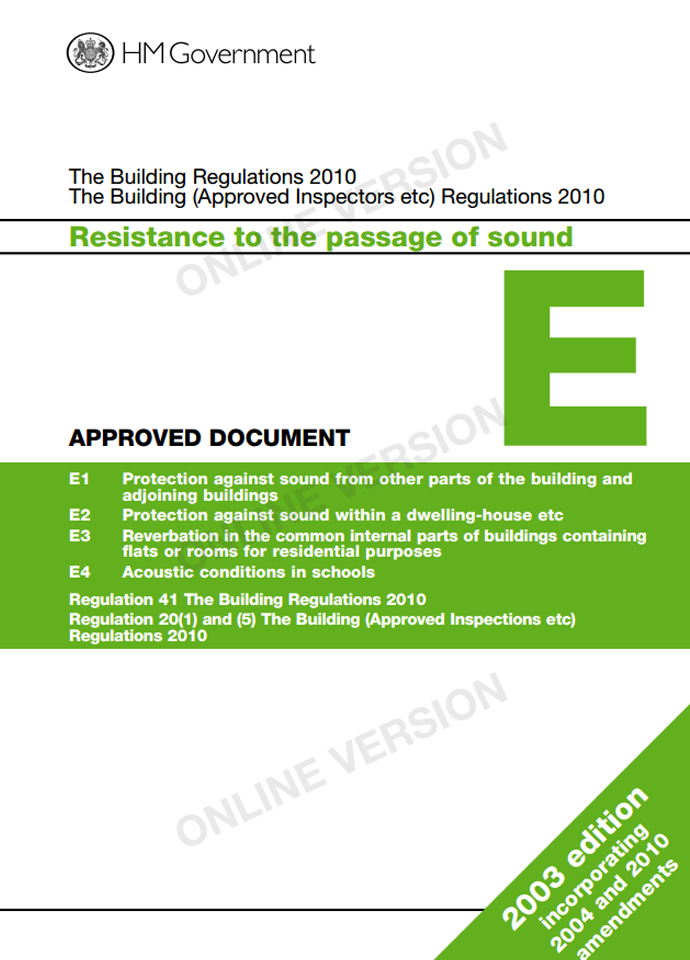Offices Nationwide

Sound Privacy
Privacy describes the perceived sound reduction across a wall, a function of both sound insulation and background noise...more

Air Testing
As part of thermographic surveys we can also use an air Pressure testing kit to depressurise the building and help detect any air leakage within the property..more
Part E
Resistance of the Passage of Sound

SAP Calculations is sometimes referred to as SAP Conversion Calculations, SAP Conversion rating, SAP Conversion Assessment, Part L1B Compliance, SAP Conversion Calcs, SAP Conversion Calc.
SAP Calculations Across the UK
What Is A SAP Calculation?
SAP calculations are the Government's Standard Assessment Procedure for Energy Ratings. In order to produce an On Construction EPC (Energy Performance Certificate) or a Predicted Energy Assessment (PEA), a SAP is required, as this is the calculation these certificates are based on.
The higher the SAP rating, the lower the cost will be to run the building. The score represents the cost of energy required by a property over the course of a year with a 100 score meaning there's no energy cost. To calculate the SAP, the assessor uses information relating to lighting, heating, hot water systems, renewable technolgies used and the elements of structure.
How Is A SAP Assessment Undertaken?
Amongst other things, the SAP assessor will determine how good the thermal elements are in the floors and walls as well as how well heat passes through these elements - this is known as a 'U' value. A high 'U' value represents a high amount of heat lost - this is used in the SAP calculation which is done off-site but requires plans and drawings of the site in order to be calculated.
The crucial information needed for the SAP software relates to the type of dwelling, floors, walls, the roof, windows, doors, lighting, renewable technologies, 'U' values, hot water and ventilation. With this, we can determine if a building complies with Building Regulations in the UK.
Why Do I Need A SAP Calculation?
It is the responsibility of the builder to provide any On Construction EPCs when a home is constructed. This will also apply if a building is converted into fewer or more units (material change of use) and changes are made to the heating, hot water provision or air conditioning/ventilation services.
Any conversions or new dwellings need to have a SAP Calculation and Predicted EPC before any work can begin as outlined in Part L of Building Regulations in the UK in 2006.
If you are selling a home before it has been built, you will need to provide information about energy efficiency in a Predicted Energy Assessment (PEA).
Our other services include:
Warning: Invalid argument supplied for foreach() in /data04/elite/public_html/Office.php on line 769
SAP Calculations can also be known as:
Standard Assessment Procedure, Domestic Carbon Emission Calculation, SAP Assessment, SAP Calc, TER DER Calc, TER DER Calculation, SAP Rating, Domestic Carbon Emission Calc,
Copyright 2025 E2 Specialist Consultants Limited
Company No. 06728970
In Area O
SAP Conversion Calc in Oadby, SAP Conversion Calc in Oakamoor, SAP Conversion Calc in Oakham, SAP Conversion Calc in Oban, SAP Conversion Calc in Ockham, SAP Conversion Calc in Oddingley, SAP Conversion Calc in Okehampton, SAP Conversion Calc in Old Warden, SAP Conversion Calc in Old Windsor, SAP Conversion Calc in Oldbury, SAP Conversion Calc in Oldham, SAP Conversion Calc in Oldmeldrum, SAP Conversion Calc in Olney, SAP Conversion Calc in Omagh, SAP Conversion Calc in Once Brewed, SAP Conversion Calc in Ongar, SAP Conversion Calc in Orford, SAP Conversion Calc in Orkney, SAP Conversion Calc in Ormskirk, SAP Conversion Calc in Orpington, SAP Conversion Calc in Ossett, SAP Conversion Calc in Oswaldtwistle, SAP Conversion Calc in Oswestry, SAP Conversion Calc in Otley, SAP Conversion Calc in Otley, SAP Conversion Calc in Ottery St. Mary, SAP Conversion Calc in Oulton, SAP Conversion Calc in Oundle, SAP Conversion Calc in Outwood, SAP Conversion Calc in Overbury, SAP Conversion Calc in Oxford, SAP Conversion Calc in Oxted, SAP Conversion Calc in Oxton,






































